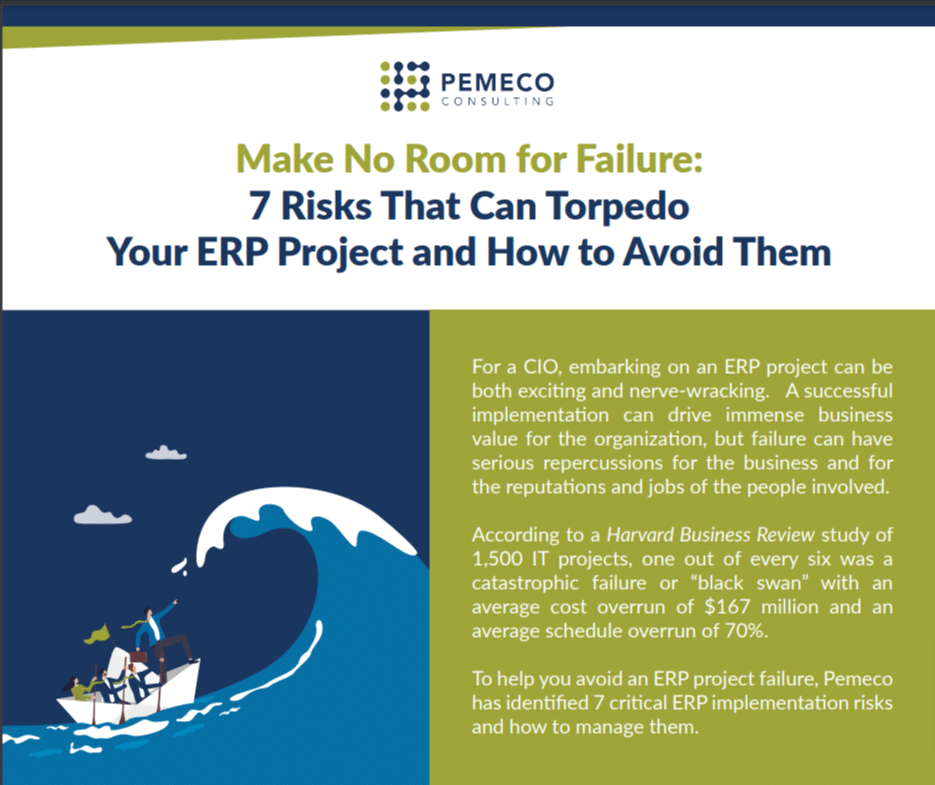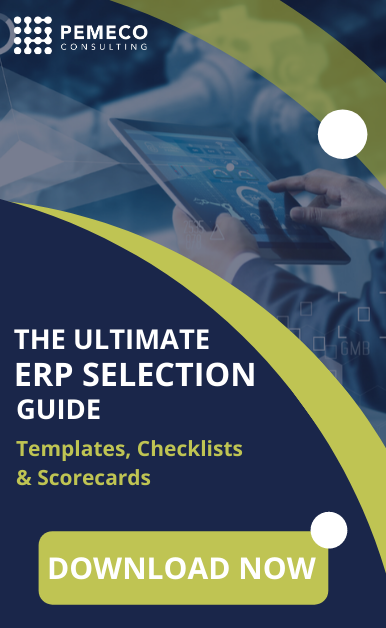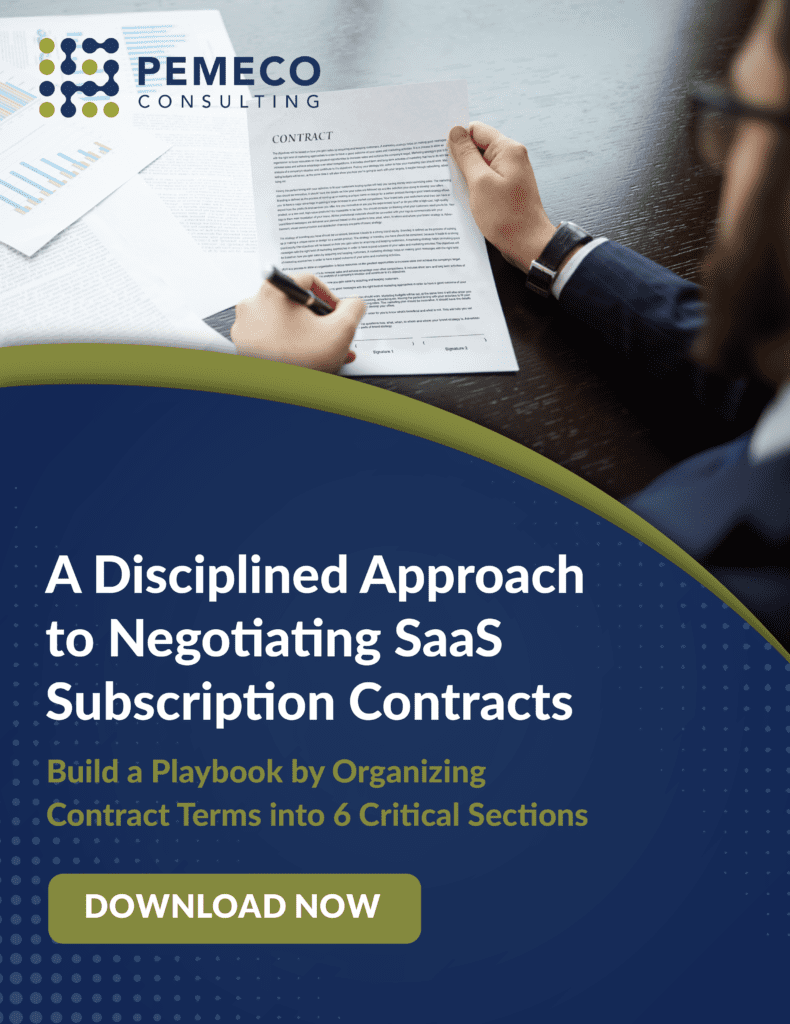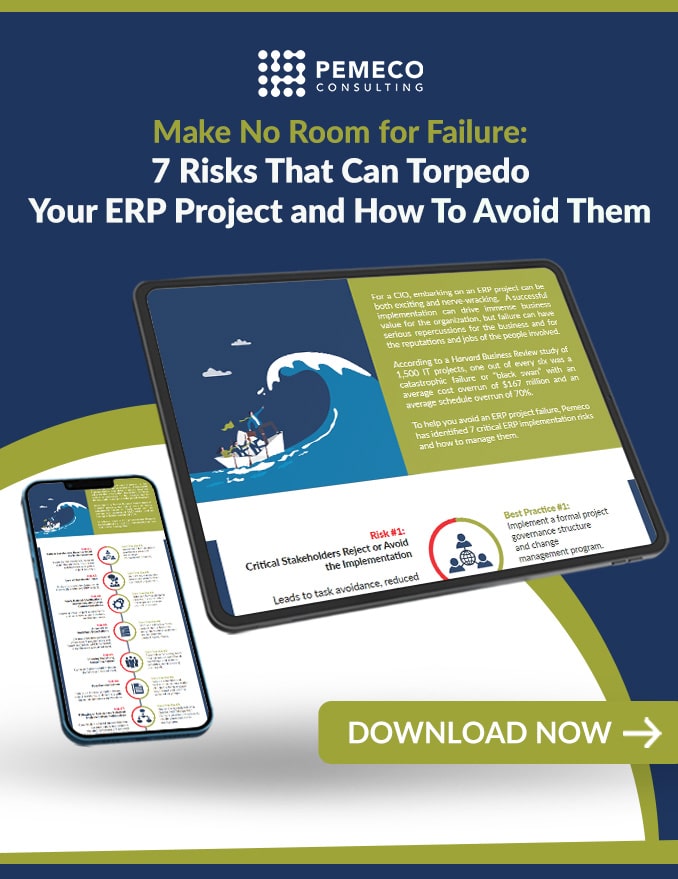An implementation failure reportedly cost Hershey’s 27 percent of its market share. Another failure put FoxMeyer Drug – a $5 billion-a-year company – out of business. More recently, Waste Management claims that a failed SAP implementation cost the company $500 million.
Two of the major causes of ERP failure are runaway implementations and organizational resistance to change. Here’s how to avoid each of these risks.
Failure Risk 1: Runaway implementation
According to IT research firm Aberdeen, cost efficiencies drive most ERP acquisition decisions.
If the implementation reins aren’t held tightly, though, service costs can make this cost efficiency goal unattainable. One reason is that most implementers charge for their services by the hour (full disclosure: our firm implements on a fixed-fee basis). So, the longer your project takes to complete, the more money it will cost you. The Internal Revenue Service, for example, spent over $50 billion on an out-of-control ERP implementation that took 10 years to complete.
Define Your Scope
One way to maintain control of your ERP implementation project is to define its scope relative to the costs and benefits. Without proper definition, the scope can creep like ivy up a building. Scope creep happens when a company decides to “ERP-ize” more business processes than is economically feasible.
Proponents of widening the scope usually make a compelling argument. They say that integrating the additional business processes will lead to greater efficiencies. They also say that implementation is the right time to do the extra work because consultants are on site and the teams are dedicated.
Experience has shown, however, that implementation is seldom the right time to widen the scope (except for dealing with unforeseen items that must be addressed). This is because the incremental costs generally exceed the incremental benefits. These incremental and oft-ignored costs include direct service costs and opportunity costs of delay. Speaking of delay, every unplanned day that a small to medium-size business is unable to operate under the new system is a day of lost efficiencies.
Failure Risk 2: Ineffective organizational change management
Stakeholder rejection of the new system and the restructured operating environment are risks that you must avoid during your planning phase.
Your failure to mitigate these risks allows disgruntled groups of your staff to undermine your project’s success. Opponents of change lurk among all stakeholder groups. Common examples include:
- A union that objects to revised job duties that fall outside of the collective agreement
- Employees who are afraid of or do not want to learn new processes
- Managers who object to donating their “A-players” to the implementation team
- Executives who stand to lose performance-based incentives because of short-term disruptions
By anticipating and addressing resistance during your planning phase, you will be better positioned to direct all your organizational efforts toward the same goal. In other words, you will focus your efforts on managing your ERP project instead of managing internal conflict.
Use project planning to mitigate failure risks
A good implementation plan mitigates scope creep with a clearly marked and easy-to-follow road map. It mitigates change resistance by nipping it in the bud. At a minimum, your project plan should address a project champion, include project plan documentation, and define project teams.
Project Champion
You should assign a project champion to ensure top management’s continued commitment to your ERP implementation. Countless ERP case studies show that an absence of a project champion is usually fatal. Commonly, an executive or top manager’s negative views translate into insufficient resources being allocated to the project. Without adequate resources, the project becomes doomed.
Your ERP project champion is responsible for legitimizing the project among the executives. This person should be a top-level manager who is both fully committed to the project and capable of influencing others.
Project Plan
Your project plan is a formal document that sets out the project deliverables on a timeline and allocates a budget to each deliverable. Each of the deliverables should be reduced to manageable and measurable tasks.
At the very least, a well-conceived project plan should include:
- Project charter
- Scope statement
- Target dates and costs
- Reporting structure and staff requirements
- Subsidiary plans dealing with scope management, resource management and public relations
Project Teams
A successful implementation also needs a strong enabling structure. Your project teams should include:
- Steering committee with executive-level strategic responsibilities
- Core team with managerial-level delegation authority
- Functional teams with responsibility for implementing the changes
To ensure interdependence and timely communications, our firm cross-pollinates each team with a member from the reporting team directly below. For example, we place the ERP project manager on both the steering committee and on the core team, and we place key users on both the core team and on a functional team.
With the commoditization of ERP, small to medium-sized businesses can now reap the informational and economic benefits of integration that were historically reserved for the largest of companies. With proper planning, your company can put itself on the success path that most others have never found.
A version of this article appeared in Manufacturing AUTOMATION.
Want to avoid ERP implementation failure?
Download The CIO’s Guide to Preventing ERP Implementation Failure.







